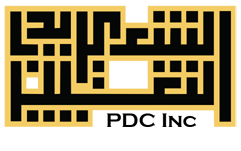
Coming Full Circle: A Look into the 2018 Daraa Offensive
Following the launch of the Syrian Arab Republic Government’s (SARG) military operation, code named “Operation Basalt,” in mid June, violent outbreaks and military attacks have continued to take lives and force civilians from their homes in search of refuge. Talks of an offensive in eastern Daraa began on June 13th, when SARG officials announced that the Free Syrian Army (FSA) had 48 hours to surrender its territory or else SARG would launch a large-scale offensive to regain the territory by force.
On June 18th, SARG launched surprise attacks at night, capturing territory near Busra Al-Harir and Masekah in eastern Daraa. By June 19th, violence in the region increased, as Tahrir al-Sham (HTS) rebel forces launched artillery shell attacks on the city of As-Suwayda in response to the SARG offensive. This attack was then countered by missile fire into several villages in Daraa. According to the United Nations Human Rights Council (UNHRC),this increase in shelling and airstrike attacks resulted in at least 46 documented civilian deaths. Between June 20th and June 21st, six civilians were reported killed following ground-based strikes in rebel-controlled areas. One June 22nd, the Syrian-Jordanian border experienced an increase in violence, as SARG forces fired around 30 missiles into rebel-held territory. On June 26th, continued airstrikes claimed the lives of six civilians. On that same day, six more civilians were reported dead after a market in western Daraa was hit with ground-based strikes. On June 27th, a family of five, a mother, father and their three children, were killed after an airstrike hit their car.
Since then, it has been reported that the total death toll in Daraa has risen to 135 civilians, 25 of which were children according to the Syrian Observatory for Human Rights (SOHR). As of June 30th, over 200,000 civilians have been displaced and forced to leave their homes in Daraa; though, according to local reports, around 160,000 refugees are located on the Israeli border. Jordan’s border has been closed to Syrian refugees since 2016, as the country was experiencing too great an influx of refugees. It is reported that around 660,000 Syrians are currently registered as refugees in Jordan. However, despite the attacks in Daraa and the new wave of Syrians seeking refuge, Jordan is not expected to open its borders any time soon due to the risk of internal instability brought forth by mass protests against the royal family due to ongoing economic problems and an unpopular new tax plan. This leaves Daraa in the midst of a grueling humanitarian crisis.
Daraa is significant territory for rebel forces, at it remains standing as one of the last strongholds for FSA and rebel forces in southern Syria. It also holds strategic and economic significance via its trade ports along the Jordanian border. The attacks launched on the region by SARG and all forces loyal to the Syrian Regime, as well as pro-Iranian militia such as Hezbollah, indicates a potential shift in power as Bashar al Assad’s regime appears intent on slowly reclaiming territory village by village. This is not without help, though. Throughout the Syrian revolution and conflict, the Assad regime has attempted to take back control over rebel-held territories and has been relatively unsuccessful. However, with the help of carpet bombings and airstrikes carried out by the Russian air force, the regime has been able to go in following the destruction and regain territory. The possible outcomes of this offensive if the rebel forces were to fall in this manner are not positive. Analysts speculate that the fall of Daraa could spark the end of the Syrian revolution as Assad continues to seek to regain power. It is reported that the regime’s scope of control over the province has risen to around 72.4 percent.
Additionally, the Islamic State (ISIS) adds another layer of complexity to the issue at hand, as the regime has cited Islamic State terrorist activity as a reason to attack the FSA, despite the fact that Daraa has been relatively successful in avoiding Islamist control. This is partly due to the fact that the region was considered a large investment to western powers, Britain and the US in particular, who sought to see the province remain secular, safe, and functional. Therefore, it is not likely that the Islamic State poses any significant threat to Daraa.
The fall of Daraa would not only mean the fall of the rebel forces’ last stronghold in southern Syria thus giving the regime complete control in the south, but it would also mark a symbolic victory for Bashar al-Assad, as the Syrian conflict and eventual war originated in Daraa following an eruption of protests in the region. As Idlib, another one of the lasting rebel strongholds in northern Syria, continues to endure repeated air strikes and civilian casualties, the future outlook for the FSA and rebel forces grows dimmer. Though, some question whether or not the regime’s attempts to overthrow rebel territory in the north will be successful.
As of Friday, July 6th, it is reported that Russian and rebel forces are set to hold new talks to reach an agreement in the region. These talks will most likely determine whether or not the rebels will maintain control over Daraa or surrender to SARG forces.
By Emily Fowler
